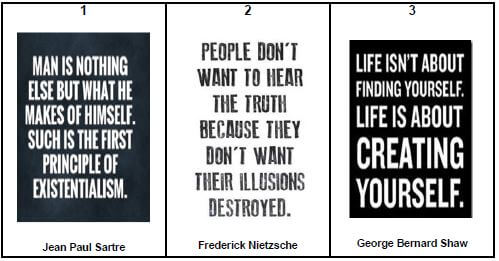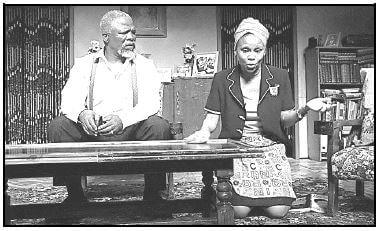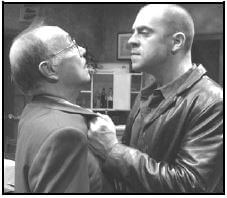DRAMATIC ARTS GRADE 12 QUESTIONS - AMENDED SENIOR CERTIFICATE EXAMS PAST PAPERS AND MEMOS MAY/JUNE 2018
Share via Whatsapp Join our WhatsApp Group Join our Telegram GroupDRAMATIC ARTS
GRADE 12
AMENDED SCE PAST PAPERS AND MEMOS
MAY/JUNE 2018
INSTRUCTIONS AND INFORMATION
- This question paper consists of FOUR sections:
SECTION A: 20th Century Theatre Movements (30)
SECTION B: South African Theatre: 1960–1994 (40)
SECTION C: South African Theatre: Post-1994–Contemporary (40)
SECTION D: The History of Theatre, Practical Concepts, Content and Skills (40) - SECTION A
QUESTION 1 is COMPULSORY.
Refer to the play text you have studied and its relevant 20th Century Theatre Movement.
EPIC THEATRE- Caucasian Chalk Circle Bertolt Brecht
- Kaukasiese Krytsirkel Translation of Bertolt Brecht play text
- Mother Courage Bertolt Brecht
- Moeder Courage Translation of Bertolt Brecht play text
- The Good Person of Szechwan Bertolt Brecht
- Kanna Hy Kô Hystoe Adam Small
OR
THEATRE OF THE ABSURD - Waiting for Godot Samuel Beckett
- Afspraak met Godot Translation of Samuel Beckett play text
- Bagasie André P Brink
- The Bald Primadonna Eugene Ionesco
- Die Kaalkop Primadonna Translation of Eugene Ionesco play text
OR
POSTMODERN THEATRE - Skrapnel Willem Anker
- Top Girls Carol Churchill
- Popcorn Ben Elton
- Buried Child Sam Shepard
- SECTION B
This section consists of THREE questions. Answer only ONE question in this section.
QUESTION 2: Woza Albert! Percy Mtwa, Mbongeni Ngema and Barney Simon OR
QUESTION 3: Sophiatown Junction Avenue Theatre Company OR
QUESTION 4: Siener in die Suburbs PG du Plessis - SECTION C
This section consists of THREE questions. Answer only ONE question in this section.
QUESTION 5: Nothing but the Truth John Kani OR
QUESTION 6: Groundswell Ian Bruce OR
QUESTION 7: Missing Reza de Wet - SECTION D
This section consists of one question (QUESTION 8) which is COMPULSORY.
QUESTIONS
SECTION A: 20th CENTURY THEATRE MOVEMENTS
This section is COMPULSORY.
QUESTION 1
Study SOURCE A below and answer the question that follows.
SOURCE A 
Evaluate, in an essay, how the play text and the 20th Century Theatre Movement that you studied this year reflect any of the quotations above.
The content of your essay must include the following:
- The 20th Century Theatre Movement you studied:
- Theatre of the Absurd OR Epic Theatre OR Postmodern Theatre
- The quotation(s) you selected from SOURCE A
- Specific examples from the play text you studied which support your answer.
TOTAL SECTION A: 30
SECTION B: SOUTH AFRICAN THEATRE: 1960–1994
Answer only ONE question in this section.
QUESTION 2: WOZA ALBERT! BY PERCY MTWA, MBONGENI NGEMA AND BARNEY SIMON
Study SOURCE B below and answer the questions that follow.
SOURCE B
EXTRACT FROM WOZA ALBERT! The lights come up on the actors wearing military hats and pink noses. Percy has a bloody bandage under his hat. |
2.1 Explain what the 'pink noses' (line 1) refer to in the play. (2)
2.2 Suggest why the creators of Woza Albert! chose to use the real names of actors in the play. (2)
2.3 Describe how you might stage lines 3 to 5 in SOURCE B. Refer to the following:
- Use of voice and body
- Use of performance space/blocking (6)
2.4 Analyse the possible challenges an actor may experience when playing many roles in Woza Albert!. (4)
2.5 The stage directions in lines 1 and 2 include the words 'bloody bandage' and 'military hats'. Explain whether these descriptions in the stage directions are necessary for the success of the scene. (2)
2.6 Explain the events leading up to Operation Coronation (lines 7 and 20). (4)
2.7 Identify and evaluate examples of the following forms of comedy in this scene:
- Physical comedy
- Verbal/Vocal comedy (6)
2.8 Assess why Woza Albert! could be described as a form of Protest Theatre. (4)
2.9 Discuss how Woza Albert! succeeded in educating and mobilising audiences through its content and style of performance. (10) [40]
QUESTION 3: SOPHIATOWN BY THE JUNCTION AVENUE THEATRE COMPANY
Study SOURCE C below and answer the questions that follow.
SOURCE C
'N UITTREKSEL UIT SOPHIATOWN MINGUS: Rubbish passionate! Jakes, just put, 'I won't wait after six!' |
3.1 Explain why Mingus asks Jakes to write a love letter for him. (2)
3.2 Suggest why an audience may find the ending of the letter, 'Yours in loving memory' (line 22), funny. (2)
3.3 Comment on how the characters relate to one another in this scene, (SOURCE C). (4)
3.4 Discuss, with line references, how you might block the scene to show these relationships. (6)
3.5 Relate the story that Jakes has 'up his sleeve' that will 'floor the lot of them'. (Lines 12 and 13) (4)
3.6 Suggest the most truthful physical and vocal techniques the actor playing Mingus in SOURCE C might use. (6)
3.7 Sophiatown could be described as Protest Theatre. What elements of Protest Theatre can you identify from the play to support this statement? (6)
3.8 Assume you are Ruth. Write a journal entry in which you reflect on:
- Your personal experiences of life in Sophiatown
- Your personal experiences of the forced removals
- The effect of forced removals on the people living in Mamariti's house (10) [40]
QUESTION 4: SIENER IN DIE SUBURBS BY PG DU PLESSIS
Study SOURCE D below and answer the questions that follow.
SOURCE D
TJOKKIE'S VISIONS WHEN HE 'SEES' IN THE PLAY Daar's die eerste man nou weer. Hy's jonger as die ander een. Hy soek weer in die akkertjie. Waar hy geplant het, is die grond gelyk. Waar die ouer man geplant het, groei daar iets. Ja, daar sien hy dit. Hy's bly. Hy dink seker dis syne ... dit word dof … dis nou weg. EXTRACT 2 Hulle (die eende) is almal bruin. Daar's een vale. Die vaal een vlieg by almal verby. Hy bly voor. Hy bly voor! Dit gaan wen. EXTRACT 3 Ek sien die huis. Almal is hier. Ek is ook hier. Tiemie is hier. Ma is hier. Ou Giel is hier. Jakes is hier. Ek is ook hier. Ons kyk na die hek. Ek sien 'n man in die hek staan. Hy maak die hek oop. Ek ken hom nie. Hy't 'n uniform aan. Hy's half bekend. Ek gaan na hom toe. Ma bly staan. Ou Giel hardloop weg. Jakes hardloop weg. Ek gaan na hom toe. Kom, Tiemie, ons gaan na hom toe, kom Tiemie … |
4.1 State why, according to the play text, Tjokkie has the ability to 'see'. (1)
4.2 Name the TWO characters who force Tjokkie to 'see'. (2)
4.3 Describe how the two characters in QUESTION 4.2 force Tjokkie to 'see'. (2)
4.4 Analyse any TWO of Tjokkie's visions in SOURCE D in relation to events and characters in the play. (6)
4.5 Justify why Siener in die Suburbs is a 'must see' production. (3)
4.6 Explain how the actor, playing Tjokkie, could physically and vocally perform the moment he 'sees' on stage. (8)
4.7 If you were directing the play, how would you use sound and lighting in a scene where Tjokkie 'sees' to enhance the dramatic and theatrical effectiveness of the performance? (8)
4.8 Discuss how ideas and themes, such as 'the future' and 'to dream', are examined in this play. (10) [40]
TOTAL SECTION B: 40
SECTION C: SOUTH AFRICAN THEATRE: POST-1994 – CONTEMPORARY
Answer only ONE question in this section.
QUESTION 5: NOTHING BUT THE TRUTH BY JOHN KANI
Study SOURCE E below and answer the questions that follow.
SOURCE E
A SCENE FROM A RECENT PRODUCTION OF NOTHING BUT THE TRUTH THANDO: Aren't you nervous? |
5.1 Describe the relationship between Sipho and Thando, as shown in SOURCE E, by:
- The placement of the characters on stage
- The dialogue (6)
5.2 Direct the actors playing Sipho and Thando on how to say their lines in the short extract in SOURCE E. (4)
5.3 Comment, with reasons, on the suitability of EACH character's costume. (4)
5.4 Suggest why Thando might be worried that Sipho is 'nervous', based on the short dialogue in SOURCE E. (2)
5.5 At the end of the play Sipho has a climactic outburst. Analyse the events leading to this outburst. (6)
5.6 Comment on the effectiveness of the realistic set design for the action of the play. (6)
5.7 Discuss how Nothing But The Truth is an example of personal and universal reconciliation. (12) [40]
QUESTION 6: GROUNDSWELL BY IAN BRUCE
Study SOURCE F below and answer the questions that follow.
SOURCE F
A SCENE FROM GROUNDSWELL THAMI: (Desperate.) Johan, yeka. Yeka! |
You have been cast in a school production of Groundswell. You are rehearsing the scene depicted in SOURCE F.
6.1 Identify the setting of the play. (2)
6.2 Describe the mood of this scene. (2)
6.3 Motivate the inclusion of isiXhosa in the play text. (2)
6.4 How does the positioning of the characters reflect their relationship and the mood of the scene? (4)
6.5 Describe how apartheid has affected the relationship between the characters in the play. (4)
6.6 You have been cast as one of the characters in the play. Reflect on the techniques of a theatre practitioner that informed the development and portrayal of your character. (6)
6.7 Describe an appropriate set that would complement the genre of the play. (4)
6.8 Explain why you believe the director chose to produce this play at your school. (4)
6.9 An important element of any realistic drama is conflict. Conflict drives the action of the play to its climax and conclusion. Discuss the significance of this statement. Refer to the plot, socio-political context and subject matter of Groundswell. (12) [40]
QUESTION 7: MISSING BY REZA DE WET
Study SOURCE G below and answer the questions that follow.
SOURCE G
'N UITTREKSEL UIT MIS MIEM: (Softly.) I'm glad you came. You're safe here with us, Gertie. (She glances quickly at the passage door.) When I think about that murderer … that rapist … creeping around the town again tonight, stalking his prey … |
You and your group have selected the scene above as part of an informal performance assessment. You have decided to play the role of Miem for the performance.
7.1 Describe how the mood of the scene is captured in the stage directions. Refer to lines 1 to 4. (2)
7.2 Outline, for the rest of your group, your ideas of sound effects that could be added to create the mood and atmosphere in this scene. (4)
7.3 Identify the irony of Miem's words in lines 11 to 13. (2)
7.4 Suggest what line 15 reveals about Meisie's attitude toward the circus. (2)
7.5 Evaluate the importance of light as a symbol in the play. Refer to examples from the play text as a whole in your answer. (6)
7.6 Analyse what values and attitudes Miem's character displays through her words and actions in SOURCE G. (4)
7.7 Explain how you would portray Miem's character both vocally and physically in lines 16 to 18. (8)
7.8 Discuss how Reza de Wet develops the idea of the supernatural in the play. (12) [40]
TOTAL SECTION C: 40
SECTION D: THE HISTORY OF THEATRE, PRACTICAL CONCEPTS, CONTENT AND SKILLS
QUESTION 8 (COMPULSORY)
Study SOURCE H below and answer the questions that follow.
SOURCE H
POOR THEATRE CONVENTIONS Polish theatre practitioner, Jerzy Grotowski (1933–1999), is best known for his intense actor training processes in the 1960s and 1970s. At the Laboratory Theatre in Opole, Grotowski and his small groups of actors experimented with the physical, spiritual and ritualistic aspects of theatre, the nature of role, and the relationship between actor and spectator. Grotowski was a key figure of avant-garde theatre. His comprehensive 5 acting system is probably the most complete approach to role since the work of Stanislavski. |
8.1 Define Poor Theatre. (2) 8.2 Write brief notes on Grotowski's view of actors and acting. (4)
8.3 Explain how South African theatre was influenced by Poor Theatre during the days of Apartheid. (4)
8.4 Briefly discuss how 'the work of Stanislavski' (lines 6 and 7) has contributed to the theatre world. (4)
8.5 Compare how Grotowski and Stanislavski used theatre space in terms of the actor-audience relationship. (6)
8.6 Suggest why Grotowski believed that theatre could not compete with 'rich' film (line 11). (4)
8.7 Compare the experience of watching a live theatre performance with watching a film. (6)
8.8 Describe how you have applied the principles of Grotowski OR Stanislavski OR film to any of your practical performances during your study of Dramatic Arts. (10)
TOTAL SECTION D: 40
GRAND TOTAL: 150

